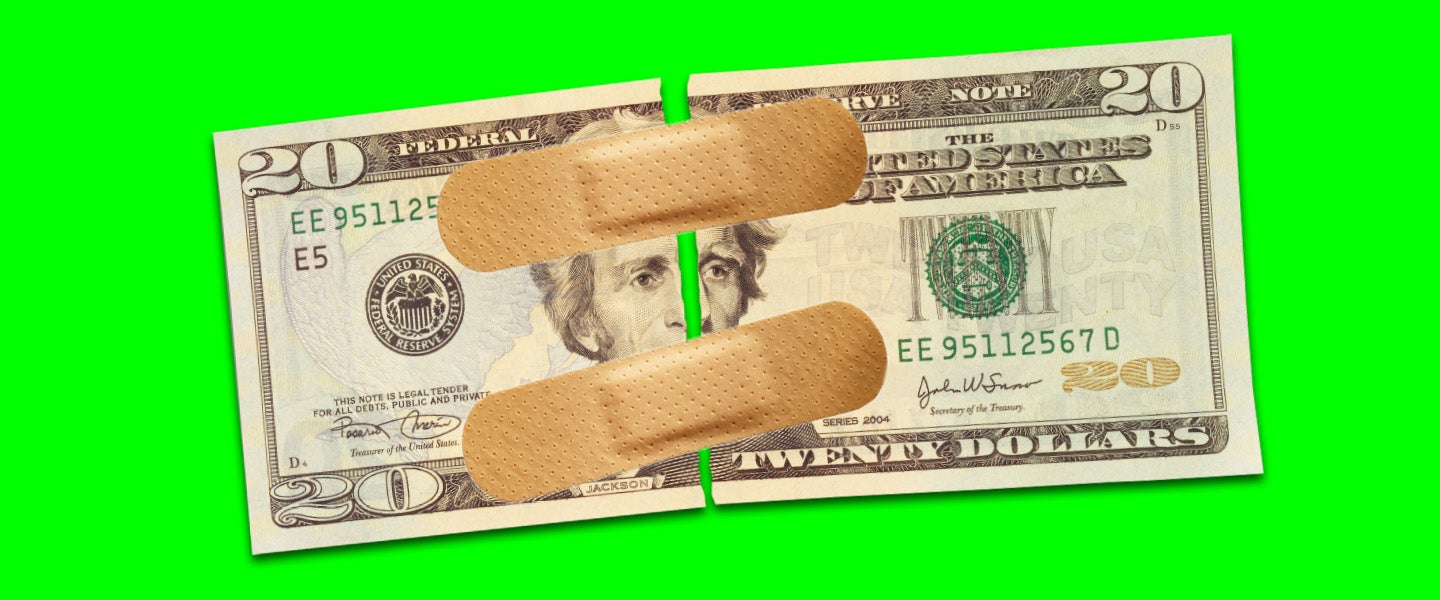So you’ve got a ripped $20 bill. Didn’t your parents ever teach you to respect property? This is why we can’t have nice things.
Except, guess what: A ripped $20 is still $20 — so long as you have more than 50 percent of the bill. Otherwise, everyone would be ripping their money to try and make $40 out of $20.
Yes, in the eyes of the government, torn money is still money. Money is also still money if it’s covered in chili or has “fuck” written all over it or is just looking a bit old and tired. If the Federal Reserve gets hold of a note with any of these qualities, they might decide not to recirculate it, but for all intents and purposes of the average person, ugly-ass money is still legal tender.
A cashier might have some qualms about accepting it, but that’s between you and them. Show them this article. Prove that you’re right. Make it a teachable moment. Technically, private businesses, individuals and organizations aren’t legally obligated to accept cash at all unless there’s a state law dictating otherwise, so there’s not really much you can do if they don’t want to take it. But they should, because it’s still technically money!
What, though, if that $20 is torn perfectly so that it’s split 50/50? You have some options: If you have both parts, you can just tape it together, silly! If for some reason taping money is beneath you, you can submit a claim and mail the money to the Department of the Treasury’s Bureau of Engraving and Printing. This bureau manages what they call “mutilated” currency, restoring over $30 million annually. Mail them your torn bill, and they’ll mail you back a check.
I used to think the government was bad, but now I think it is good pic.twitter.com/0qXsWfBlsB
— Dan Amira (@DanAmira) April 3, 2018
You can also go through the Bureau if your money is badly mutilated, beyond simply being ugly. Per the Bureau’s website, “Currency can become mutilated in any number of ways. The most common causes are fire, water, chemicals and explosives; animal, insect or rodent damage; and petrification or deterioration by burying.”
In these cases, the 50 percent rules similarly apply, but there’s some wiggle room. You can submit a portion of a bill that clearly represents more than 50 percent of the total note, but you still have a shot at getting your value back if you have less. If you’re able to reasonably prove that the remainder of a bill is destroyed, as may be the case in a house fire or if moths managed to eat it, you will need to provide supporting evidence, and these claims can take anywhere between six and 36 months.
Beyond extreme circumstances, most bills have a set lifespan, anyway. For a $20, this is around 7.8 years. The more value the bill has, the longer it tends to survive before the Fed gets a hold of it and decides it’s “unfit” to re-enter society. Of course, eventually, all money will become obsolete, as we shed our human forms and transcend as shapeless orbs, existing solely on a spiritual plane wherein material value is nonexistent. But until then, we have tape!

